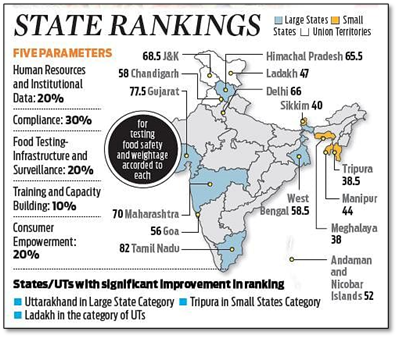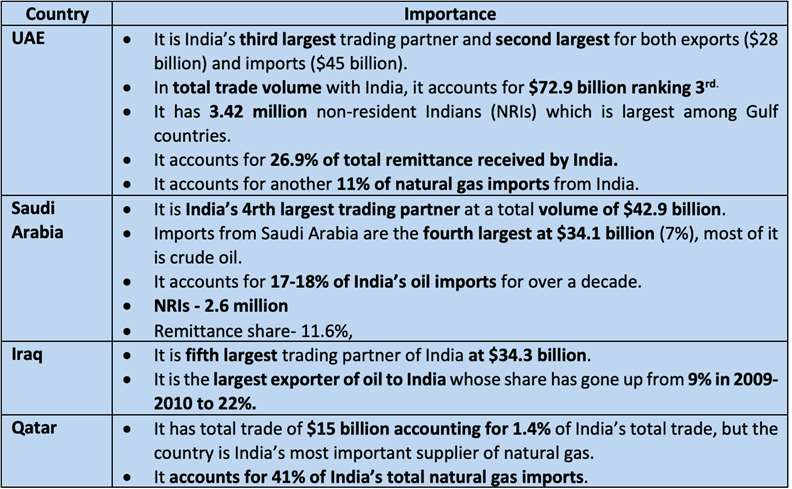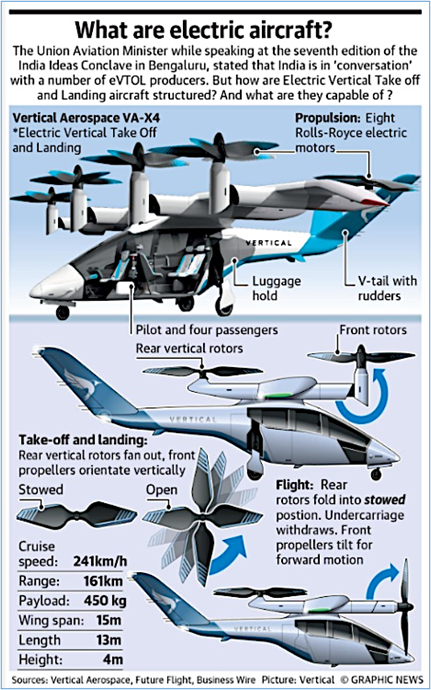Friday, 10th June 2022
New cure for cancer - Edukemy Current Affairs
In News
In a medical trial, 12 patients in the United States were completely cured of rectal cancer without requiring any surgery or chemotherapy.
About the News
- The monoclonal antibody called Dostarlimab was administered every three weeks for six months for the treatment of a particular kind of stage two or three rectal cancer.
- The trial showed that immunotherapy alone – without any chemotherapy, radiotherapy, or surgery that have been staples of cancer treatment – could completely cure the patients with a particular kind of rectal cancer called ‘mismatch repair deficient’ cancer”.
- The immunotherapy belongs to a category called PD1 blockades that are now recommended for the treatment of such cancers rather than chemotherapy or radiotherapy.
- No cases of progression or recurrence had been reported during the follow-up.
What is ‘Mismatch repair deficient’ cancer?
- It is the most common among colorectal, gastrointestinal, and endometrial cancers.
- Patients suffering from this condition lack the genes to correct typos in the DNA that occur naturally while cells make copies.
Why are the findings important?
- Earlier, PD1 therapy was used post-surgery, but the study has shown that a surgery may not be required.
- Although the therapy is usually used for cancers that have metastasised (spread to locations other than where the cancer formed), it is now recommended for all mismatch repair deficient cancers as they result in quicker improvement and lesser toxicity as compared to traditional chemo and radiotherapy.
- Eliminating other treatments can improve a patient’s quality of life by preserving fertility, sexual health, and bladder and bowel functions.
Limiting Factors
- Precision medicine, such as using particular immunotherapy drugs for particular types of cancers, is still at a nascent stage in India.
- The cost of such therapy is very high and makes it unaffordable for patients in India.
- An immunotherapy treatment can cost around Rs 4 lakh per month, with patients needing the treatment for six months to a year.
Sources:
Challenges in Indian Patent regime
In News
U.S. Trade Representative has highlighted IP challenges in India.
About the News
- The S. Trade Representative (USTR) has recently released an annual Special 301 report highlighting that India was one of the most challenging major economies as far as IP protection and enforcement is concerned.
- A patent is an exclusive set of rights granted for an invention, which may be a product or process that provides a new way of doing something or offers a new technical solution to a problem.
- It has also decided to retain India on its Priority Watch List along with six other countries- Argentina, Chile, China, Indonesia, Russia and Venezuela.
What are the issues raised in the USTR report?
- About: The USTR 301 report has highlighted a range of issues ranging from copyright and piracy to trademark counterfeiting and trade secrets with India. It has also highlighted the threat of patent revocations, lack of presumption of patent validity and narrow patentability criteria as issues which “impact companies across different sectors.”
- Confronting Section 3: US has always opposed this clause as it deals with what does not qualify as an invention under India’s Patents Act, and Section 3(d) in particular excludes “the mere discovery of a new form of a known substance which does not result in the enhancement of the known efficacy of that substance”, from being eligible for protection under patent law.
- Uncertainty: Abolishing of the Intellectual Property Appellate Board (IPAB) by India has resulted in the redirection of courts and has created uncertainty around adjudication of IP cases and copyright royalty rate setting.
About India’s patent regime
- Party to TRIPS: India is party to the Trade-Related Aspects of Intellectual Property Rights (TRIPS) Agreement of WTO since 1995 and has amended its internal patent laws to comply with TRIPS, most notably in 2005, when it introduced pharmaceutical product patents into the legislation.
- Original Indian Patents Act did not grant patent protection to pharmaceuticals to ensure that medicines were available to the masses at a low price. However, Patent protection of pharmaceuticals were re-introduced after the 2005 amendment to comply with TRIPS.
- India is also a signatory to several IPR related conventions, including the Berne Convention, which governs copyright, the Budapest Treaty, the Paris Convention for the Protection of Industrial Property, and the Patent Cooperation Treaty (PCT).
- Statutes: Indian patents are governed by the Indian Patent Act of 1970 under which, patents are granted if the invention fulfils the following criteria:
- It should be novel, have inventive step/s or it must be non-obvious, capable of Industrial application and should not attract the provisions of sections 3 and 4 of the Patents Act 1970.
- Section 3(d): It prevents what is known as “evergreening” of patents. As patents give you a monopoly over a chemical molecule for 20 years. So, to continue protection under the patent regime, a pharmaceutical company may make certain minute modifications and reapply for a patent, allowing them to extend the life of patents about to expire.
- Novartis vs. Union of India judgement: Section 3(d) of the Indian patent act allows for “generic competition by patenting only novel and genuine inventions, a clause, which was upheld by the Supreme court of India.
Sources:
India-Vietnam Joint Vision on Defence Partnership
In News
India and Vietnam have recently signed a Joint Vision Statement on India-Vietnam Defence Partnership towards 2030 along with sealing a logistics support pact.
About the News
- This initiative is to further broad-base the scope and scale of defence ties between the two countries by 2030 and to allow militaries of the two sides to use each other’s bases for repair and replenishment of supplies.
- The MoU on mutual logistics support is the first such major agreement that Vietnam has signed with any country.
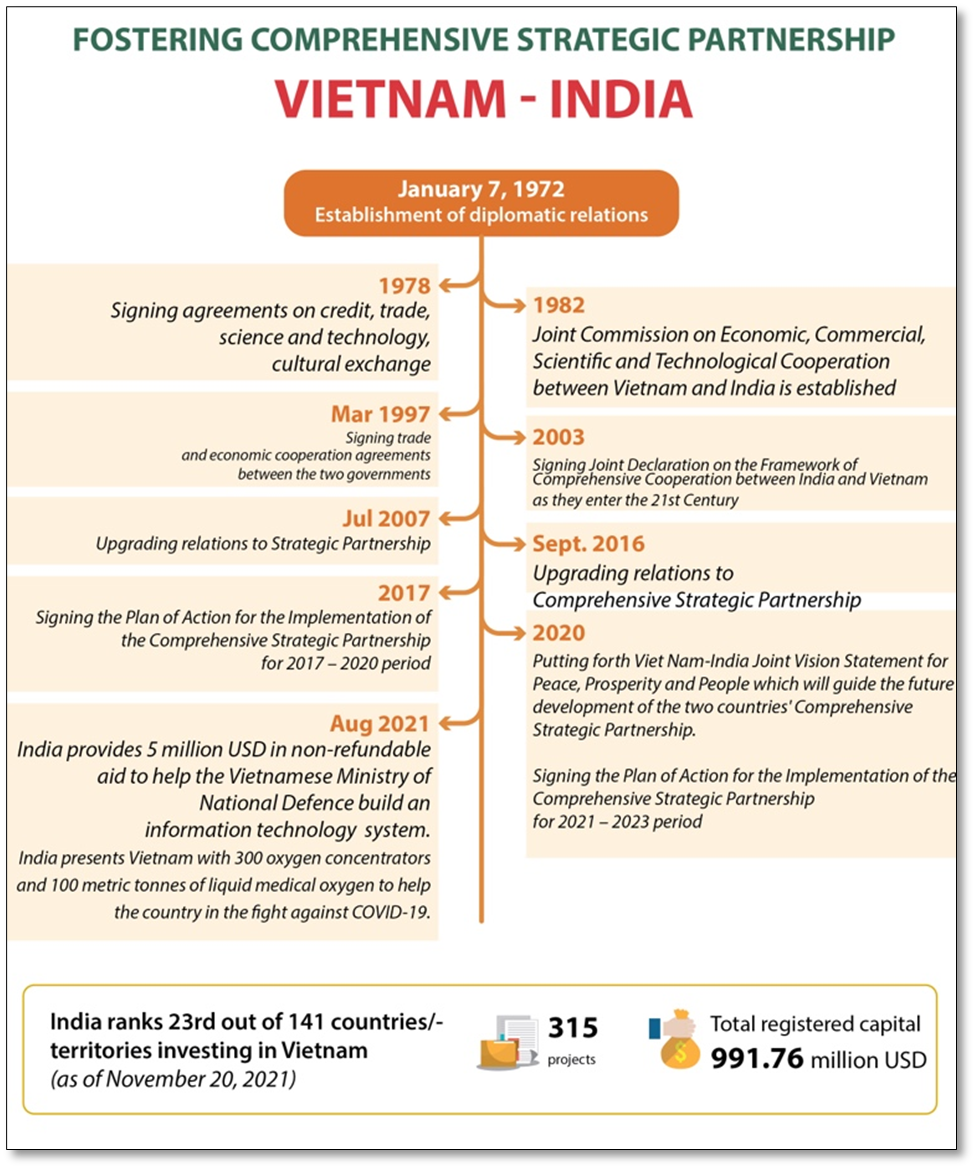
- The two sides have also agreed to an early finalisation of India’s $500 million defence line of credit to Vietnam, with implementation of the projects under it adding substantially to Vietnam’s defence capabilities and furthering the government’s vision of ‘Make in India, Make for the World.’
- The defence ministry has also handed over to Vietnam 12 high-speed guard boats built under a $100 million Line of Credit by India.
India-Vietnam Ties:
- India and Vietnam have been having a traditionally close and cordial bilateral relation over the years.
- India was the chairman of the International Commission for Supervision and Control (ICSC) which was formed in pursuant of the Geneva Accord of 1954 to facilitate the peace process in Vietnam.
- India initially maintained consulate-level relations with the then North and South Vietnam and later established full diplomatic relations with unified Vietnam in 1972.
- India has oil exploration projects in the Vietnamese waters in the South China Sea.
- Vietnam, an important country of the ASEAN (Association of Southeast Asian Nations), has territorial disputes with China in the South China Sea region.
- To compliment this, India and Vietnam are boosting their maritime security cooperation in the last few years to protect common interests.
- Vietnam is also an important partner in India’s Act East policy and the Indo-Pacific vision.
- Bilateral defence engagements have expanded over a period of time via defence policy dialogues, military-to-military exchanges, high-level visits, capacity building and training programmes, cooperation in the UN peacekeeping and bilateral exercises.
- Relations between the two countries were elevated to the level of ‘Strategic Partnership’ in 2007 which was elevated to a ‘Comprehensive Strategic Partnership’ in 2016.
- From $200 million in 2000, the bilateral trade between India and Vietnam has seen steady growth of upto $14.14 billion in 2021-22.
- Indian exports to Vietnam reached $6.70 billion while Indian imports from Vietnam stands at $7.44 billion.
- In FY 2021-22, Vietnam was the 23rd largest trading partner globally for India and the fourth largest among ASEAN countries, following Singapore, Indonesia and Malaysia.
Source:
- India, Vietnam sign joint vision on defence partnership as Rajnath Singh holds bilateral talks on three-day tour
- India, Vietnam sign 2030 vision statement, seal pact on mutual logistics support
Image source:
Ramnath Tagore - Edukemy Current Affairs
On June 10, 1877 Ramnath Tagore breathed his last. Ramanath Tagore CSI , also spelled Roma Nath Tagore, was one of the leading social figures in 19th-century Kolkata. The son of Rammani Tagore of the Jorasanko branch of the Tagore family, he was younger brother of Dwarkanath Tagore and a cousin of Prasanna Coomar Tagore. As a member of the Bengal legislative council to which he was appointed in 1866, he so stoutly advocated the rights of the tenants that he was named the 'Ryots Friend.' He was nominated to the Viceroy's Council in 1873. He became dewan of the Union Bank in 1829 and remained with the bank until it was wound up. He was one of the original trustees of the Brahmo Samaj.
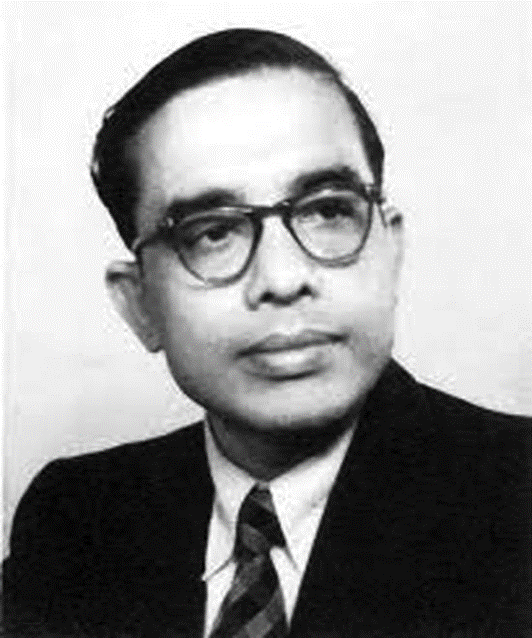
Ramanath was one of the persons who initiated the establishment of the British Indian Association and was its president from 1867 to 1877. In association with Prasanna Coomar Tagore, he started the Indian Reformer. He contributed extensively to the Harkara and Englishman under the pseudonym "Hindu."
Other significant event on this day: https://edukemy.com/current-affairs/gazette/2021-06-10/this-day-in-history-mig-21
Sources:
Jan Samarth portal - Edukemy Current Affairs
- Context: The Indian Prime Minister has recently launched the Jan Samarth
- Jan Samarth is a national portal for credit-linked government schemes.
- The portal will be a one-stop gateway for all credit-linked schemes of the government.
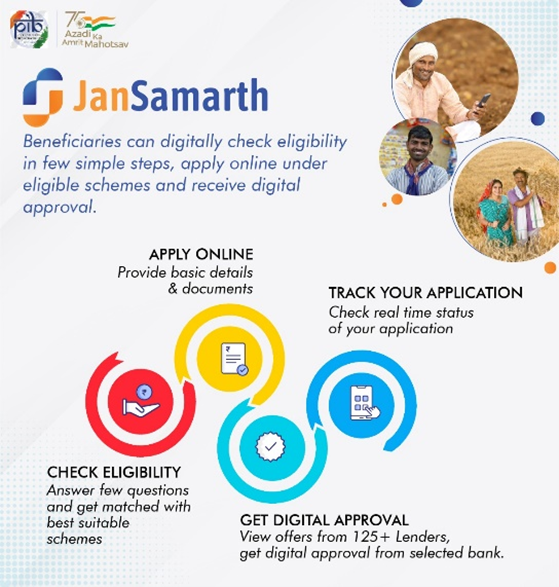
- Its main purpose is to encourage inclusive growth and development of various sectors, by guiding and providing them with the right type of government benefits through simple and easy digital processes.
- The portal is unique in the sense it is the first of its kind. It connects beneficiaries directly to the lenders.
- Presently, 13 schemes under 4 loan categories (education, agricultural infrastructure, business activity and livelihood) are linked to this portal.
Source:
- PM Modi to launch ‘Jan Samarth’ portal for easy access to credit-linked schemes
- UPSC Essentials: Reports, policies and data on your tips- Jan Samarth Portal
Image source:
Marijuana legal in Thailand - Edukemy Current Affairs
- Context: Thailand has become the first Asian country to legalise consumption of marijuana.
- It has legalised growing of Marijuana and its consumption in food and drinks, with the aim of boosting its agriculture and tourism sectors, but smoking pot is still against the law.
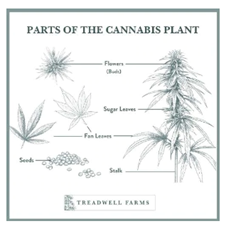
- In India, the Narcotic Drugs and Psychotropic Substances (NDPS) Act of 1985, frames regulations around Marijuana.
- While the Act prohibits the sale and use of cannabis resin and flowers, it permits the use of its seeds, stems, and leaves.
- In 2018, Uttarakhand became the first state in the country to allow commercial cultivation of hemp crops, along with Madhya Pradesh the next year.
- The earliest reference to cannabis is contained in the Atharvaveda, which refers to it as one of the “five kingdoms of herbs that release us from anxiety.”
- The utilities of it include, Medicinal uses, Industrial Applications, nutritional benefits, along with an additional avenue for Government to collect taxes.
Source:
Image source:
Australia-India Water Security Initiative (AIWASI)
- Context: The Union Cabinet has approved the Memorandum of Understanding, between India and Australia for Technical Cooperation for AIWASI.
- Australia-India Water Security Initiative was developed under the framework of the Australia-India Comprehensive Strategic Partnership, to fulfil both countries’ commitment to increase water security cooperation.
- The initiative was launched at the 4th World Water Summit in New Delhi in 2020, with the Australian Government announcing its contribution of $10 million to support cooperation between Australia and India on urban water security.
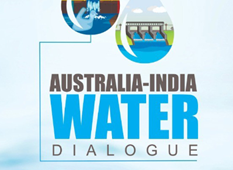
- The MoU will:
- Strengthen bilateral collaboration in the field of urban water security between the two nations by improving the access, affordability, and quality of water.
- Promote a circular economy of water and water-secure cities.
- Encourage climate-resilient water management practices, community participation in water management, and social acceptance through measures for accessible infrastructure.
- Allow both parties to learn about technical achievements made by two countries in crucial areas of urban water security, as well as foster learning, best practices, and institutional capacity building.
Source:
- India-Australia MoU for cooperation in urban water management gets Union Cabinet nod
- Australia-India Water Security Initiative launched
Image source:
Unified Geologic Map of the Moon
- Context: The United States Geological Survey (USGS) in partnership with NASA and the Lunar Planetary Institute has released a new comprehensive map of the Moon, called the ‘Unified Geologic Map of the Moon’.
- This new work represents Moon in a seamless, globally consistent, 1:5,000,000-scale geologic map derived from the six digitally renovated geologic maps.
- The goal of this project is to create a digital resource for science research and analysis, future geologic mapping efforts, global-scale products, and to provide a resource for the educators and the public interested in lunar geology.
- The map will serve as a definitive blueprint of the Moon’s surface geology for future human missions.
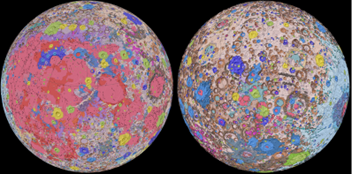
- The map will also help researchers learn the history behind the formations located on the Moon’s surface.
- The map has been created with the help of the information gathered from six Apollo-era regional maps, along with data from recent missions to Moon.
Source:
Image source:
Avoiding the coal scarcity trap: Indian Express
Essence: Early onset of summer, energy supply disruption because of the Ukraine crisis and fast post-COVID recovery in demand for energy has increased demand for coal.On top of it, thermal power plants are facing increased cost of imported coal which has more than doubled in just a year's time.
Government has taken proactive measures like directing generators to import coal, making Coal India aggregator for imported coal to increasing bargaining power and energy price monitoring,
Government has also directed imported coal-based plants to run at full capacity despite high imported coal cost and assured them compensation later. A committee of officials has also been set up to rework the energy charge for imported coal-based generators. While these steps are useful, a question is being raised on the trust deficit between the Government and Central Electricity Regulatory Commission (CERC) which is complicating the situation. Committee formed by the government is accused of adopting opaque methods to calculate energy price which is being questioned by energy producers.
Government must ensure that transparency and accountability is fixed. Ultimately it must be appreciated that the coal crisis is not because of lack of availability of domestic coal which is available in plenty in mines, but it is because of lack of railway rakes to transport coal from mines to power plants. It is time for the government to take lead and ensure that power supply remains uninterrupted in the monsoon season.
Why should you read this article?
- To understand the reasons behind the coal crisis.
- To note steps being taken by the government to proactively address it and some issues with some of these steps.
Source:
Indian Universities Soar: Global Ranking Celebration
Essence: In the recently announced QS World Universities Rankings 2023, Indian higher educational institutions have done their best to date. India has set the stage for superior quality and world-recognised tertiary education with 41 universities being ranked in QS World Universities 2023.
The central government’s historic decision to bring in the National Education Policy (NEP) 2020, 34 years after the previous policy, reflects greatly on the vision, aspirations and farsightedness. This will help reforming the education system and bridging the gap between current learning outcomes and those desired, while recognising the need to keep up with a rapidly-changing world and knowledge landscape.
However, there are also a number of areas that call for immediate attention of the government. The first one is the state expenditure on education as a percentage of GDP. Then comes issues of mobility of international faculty and students. India’s spending on research has been low for decades. Lastly, India doesn’t have education penetration to the last mile, but that is something which the government aims to rectify through its target of achieving a 50 per cent Gross Enrolment Ratio by the year 2035 against 26.3 per cent in 2018, as envisaged in the NEP.
Why should you read this article?
- To understand the various steps taken by India to improve Indian university’s world ranking
- To know further steps needed to improve the education system in India
Source:
Teen Triumph: Supriti Kachhap's Golden Journey
Background
Supriti Kachhap recently won gold in the Khelo India race at the age of 19, only breaking records.
About her journey
- Supriti Kachhap was just an infant when her father Ramsewak Oraon, was killed by Naxals in Burhu village, in Gumla district of Jharkhand. Her mother Balmati Devi raised her with 4 siblings with the support of a government job at the Block Development Office.
- Supriti was always good at running. It was during an inter-school competition that she was spotted by coach Prabhat Ranjan Tiwari, who took her under his wings at the Jharkhand Sports Training Centre in Gumla in 2015.
- Running long distance came naturally to her and she could graduate from small distance to long distance running, like 3000m, within a very short interval of training.
- She has won many medals in different competitions across the country with her dedication and hardwork.
Quote: A dream doesn't become reality through magic; it takes sweat, determination and hard work. -Colin Powell
Source:
Share the article
Get Latest Updates on Offers, Event dates, and free Mentorship sessions.

Get in touch with our Expert Academic Counsellors 👋
FAQs
UPSC Daily Current Affairs focuses on learning current events on a daily basis. An aspirant needs to study regular and updated information about current events, news, and relevant topics that are important for UPSC aspirants. It covers national and international affairs, government policies, socio-economic issues, science and technology advancements, and more.
UPSC Daily Current Affairs provides aspirants with a concise and comprehensive overview of the latest happenings and developments across various fields. It helps aspirants stay updated with current affairs and provides them with valuable insights and analysis, which are essential for answering questions in the UPSC examinations. It enhances their knowledge, analytical skills, and ability to connect current affairs with the UPSC syllabus.
UPSC Daily Current Affairs covers a wide range of topics, including politics, economics, science and technology, environment, social issues, governance, international relations, and more. It offers news summaries, in-depth analyses, editorials, opinion pieces, and relevant study materials. It also provides practice questions and quizzes to help aspirants test their understanding of current affairs.
Edukemy's UPSC Daily Current Affairs can be accessed through:
- UPSC Daily Current Affairs can be accessed through Current Affairs tab at the top of the Main Page of Edukemy.
- Edukemy Mobile app: The Daily Current Affairs can also be access through Edukemy Mobile App.
- Social media: Follow Edukemy’s official social media accounts or pages that provide UPSC Daily Current Affairs updates, including Facebook, Twitter, or Telegram channels.


